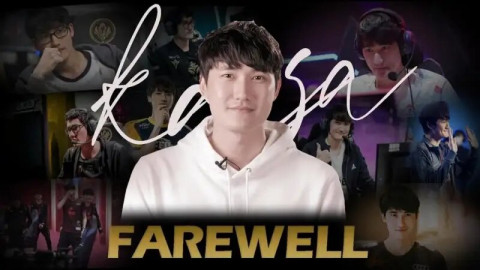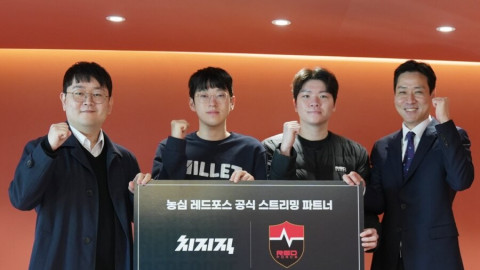
The following guest article was written by the Mobalytics team.
Whenever an international tournament arrives, regional styles collide, and a meta forms based on what’s perceived to be the best. Teams bring the approaches of their home regions and then mash them with the picks, builds, and ideas that they run into when they scrim and on-stage.
The strongest teams tend to lead the way and define the formula for which the other teams follow suit. In a post-MSI victory interview, RNG Head Coach Heart explained:
During the MSI, I felt that our team was truly powerful when I noticed that other teams were learning from us. Whenever we played something new during practice, the other MSI teams copied us.
I also feel that the meta shifts depending on which region wins a tournament. There isn't a "single best" meta. If we end up countering a meta that everyone thought was the best, then that counter will become the meta. In my opinion, "the champion is the meta." During this year's MSI, we made the meta.
Sure, we saw some interesting developments at MSI with the presence of picks like Yasuo, Double-tear Ezreal, and Battle Soraka, but by the end of the tournament, it became a clearly defined ADC-centric meta where the other teams were trying to beat RNG at their own game.
In a game with over 140 champions, why does it feel like the number of memorable meta adaptations throughout League’s competitive history has been quite small in comparison to the number of teams that we see striving to copy the best?
We all know that League changes incredibly fast with constant adjustments due to the frequent patch cycle, so it’s understandable that it may be logical to replicate what the best teams in the world are doing. But at the end of the day, if everyone plays the same meta, the better teams will likely always have an edge.
Should teams put more focus into pursuing and solidifying their own unique styles? Should they look to discover and develop more counter-picks and counter-strategies?
The graphic below shows some notable attempts to counter champions and metas throughout the history of Worlds. These cases, in general, were quite rare and had different levels of success due to a variety of reasons specific to each case.

Sometimes a counter-pick makes sense in theory, working in solo queue and scrims, but may fail on the big stage due to the high level of play required to execute it - such as the case of Yasuo into Gnar of Worlds 2017.
The effectiveness of a pick can also be skewed by the prowess of the player wielding it. For example, the success of Fiora against Darius at Worlds 2015, another counter in theory, may have simply been attributed to SKT Marin’s overall dominance at the tournament. Other players tried their hand at the pick but weren’t anywhere near as successful.
In this article, we’ll be revisiting two of the most successful counter-picks in competitive League history: Miss Fortune at Worlds 2016 and Leona at Worlds 2017. Keep in mind that this is a huge topic with tons of factors involved so we are by no means, aiming to prove anything definitive - rather, we are looking to examine the reasons why these picks found success in their respective Worlds metas and what we can take away based on their impact.
Worlds 2016 Miss Fortune into Zyra: Even gods have blind spots
As a refresher, the meta of Worlds 2016 involved popular picks such as Rumble, Poppy, and Jayce in the top lane, carry Junglers like Lee Sin, Olaf, and Elise, and mages like Viktor, Cassiopeia, and Ryze in the mid lane.
The bot lane meta revolved around picks like Jhin, Caitlyn, and Ezreal for ADCs, and Karma and Nami for Supports. There were a few tanky Supports like Alistar and Braum around, but team duos overall, tended to favor poke heavy approaches.
People often forget that the Miss Fortune adaptation was a reaction to a pick that had risen while the tournament was in motion. On Day 3 of Week 2, SSG’s CoreJJ picked Zyra for the first time in the tournament against RNG - a pick which helped bring about the fastest victory at that point of Worlds.
Zyra became an ideal pairing with the meta ADCs and encouraged the rise of Ashe alongside her. In the following 12 matches after her debut, Zyra was a dominant pick, boasting an 83% win rate. 2 weeks later, when the ROX vs SKT semifinals began, her counter-pick finally arrived.
The first game of the series brought standard picks across all lanes with SKT grabbing Zyra early on in the draft. Although ROX were able to land First Blood, SKT ended up closing the game with a 13k gold lead. With the reigning champions in good form, the onus was on ROX to either give the expected meta another go, or make an adaptive change.

In Game 2, SKT once again prioritized Zyra early on in the draft. With their last pick, ROX selected the famous Support Miss Fortune counter-pick. Let’s take a look at the voice comms from one of Riot’s mic checks during the game’s pick and ban phase to understand the context of the situation:
ROX Smeb: Honestly, shouldn’t we try it out, the Karma/MF we practiced?
(ROX select Miss Fortune)
SKT Bang & Wolf: Oh? What is this?
SKT Duke: What is that?
SKT Faker: Hey they picked incorrectly.
SKT Blank: What? What is that?
SKT Bang: Wow.
SKT Kkoma: That’s an accident, right?
SKT Faker: Yeah.
SKT Wolf: Ah… are they trying to use that intentionally?
SKT Faker: No, no. They made a mistake picking.
From this quick peek into team communications, we gain a few key insights. First off, Smeb revealed that ROX had prepared the pick in advance (perhaps during the time between the group and semifinal stages). This tells us that although they had Miss Fortune in their arsenal, they chose to not use the pick in game one. Why?
Perhaps they wanted to see if they could beat SKT toe-to-toe in the standard established meta. Maybe they weren’t confident enough to use it right from the get-go. It’s also possible that they wanted to keep the pick a secret for as long as possible as an ace up their sleeve.
When we look at SKT’s perspective, they had no idea that the pick was coming. Everyone on the team from Faker, the undisputed best player at the time, to Kkoma, the best coach at the time, were perplexed by the pick and even thought that it was an unintentional error.
In game two, the ROX bot lane dominated the lane phase. Pray came ahead of Bang by over 30 CS and was able to take First Turret with the help of Gorilla’s pressure. The Support’s Miss Fortune ended the game with a solid 1/1/10.
MF’s kit countered Zyra due to the ability to easily bounce her Q, Double Up off of Zyra's plants. The plants, which had proved to be a nightmare throughout the tournament were suddenly cleared much faster since they could be cleared by MF with 2 auto-attacks instead of 3, or with her E, Make it Rain.

Tied 1-1, SKT opted for the Zyra again, testing whether the MF was a fluke. They were unable to adjust to the new pick and lost again. ROX found themselves in a position to dethrone the world champions.
Unfortunately for ROX, SKT ended up banning her the last two games and were able to eventually take the series. Overall, the MF was able to win two games and force SKT to use two crucial bans.
The pick carried on to the other side of the semifinals bracket where SSG successfully used her again into Zyra against H2K game one. She was banned the rest of the series and then only made one appearance as a ban in the finals.
Although SKT went on to secure their third Worlds title, a blindspot in their preparation brought them to one game away from elimination. ROX were rewarded for their efforts in looking to counter the established meta, unfortunately they weren’t prepared with a good enough follow-up adaptation when SKT resorted to banning MF.
If ROX had more time, perhaps they could’ve had an additional adaptation ready once the MF was canceled out. More time may have also meant that SKT would be able to discover the MF counter-pick and be ready for it.
It is important to note that this was a case of a top-tier team against a top-tier team, so perhaps it may not be as viable a strategy for lesser teams. Our next example will examine a case that was even more of an underdog story.
Worlds 2017 Leona into Ardent Censer: Playing to your Style
A year later, history repeated itself when the bot lane once again came to the forefront of the Worlds landscape.This time, the Support item, Ardent Censer, fostered a meta in which a hyper carry ADC + Enchanter Support combo heavily populated the meta.
Teams built their compositions around this duo archetype with beefy frontliners like Cho’gath, Maokai, and Shen in the top lane, playmaking engagers like Sejuani, Jarvan IV, and Gragas in the Jungle, and mobile control mages like Ryze, Galio, and Taliyah in the mid lane.
To give some perspective for how ingrained this strategy was, from Groups to the Finals, the most contested Enchanters, Lulu and Janna, combined for 91 picks. This number exceeded the sum of the number of times ALL other Supports champs were picked.
A theme that has rung throughout this article so far is that when a meta becomes popularized, the best teams will play to the status quo. The teams challenging them must either find a way to outplay them or adapt a new method to defeat the standard.

When the quarterfinals arrived, Misfits found themselves matched up against the perennial goliaths, SKT. Unlike ROX who were seen as a top team in the previous year, Misfits had gone into the tournament with low expectations from fans and analysts alike. Most were surprised that they had even made it to that point.
Similar to ROX’s game one approach from 2016, MSF tested their chances of playing within the meta by opting for an Ardent-based Taric + Tristana combo. They ended up facing a massive defeat where SKT lead by over 17k gold, with a 15 to 1 difference in kills. MSF ended the match with zero turrets destroyed.
Faced with a huge gap in skill in terms of playing the standard, MSF looked to take a different approach in game 2. With their last pick, they selected Blitzcrank in an attempt to stifle SKT Bang’s Kog’Maw.
At the time (and still today), Ignar was known for preferring an aggressive, playmaking style. He had picked Blitzcrank only once before during the tournament against TSM, a game which MSF lost.
The gamble against the meta worked - Ignar’s Blitzcrank ended the match at 9 assists with 81% kill participation. His lane partner, Hans Sama’s Tristana, was able to scale to three items with this unconventional strategy and carried the match with a score of 8/0/3. SKT Bang, despite having the Ardent Support, was stuck at 2 items with nearly 60 less CS.
In game 3, SKT showed that they had learned from the previous year against Miss Fortune. Rather than face the counter-pick a second time, they respected it and banned Blitzcrank immediately.

With Ignar’s aggressive champ off the board, SKT first-picked Lulu, the priority choice of the tournament. In response, MSF revealed that they had another counter-pick prepared, Leona. To top it off, they added a surprise Ivern, a pick which still allowed them to play within the strengths of the Ardent meta.
It’s possible that SKT was expecting the Leona pick because they countered with Vayne for Bang. If a Vayne player is fast enough, they can prevent a Leona engage by knocking them away with a Condemn. She was also still a hyper carry that synergized well with Lulu.
Before long, it became clear that the series was still being played to the MSF style.The Leona, paired with Fervor of Battle (from the old rune and mastery system), packed enough punch to take the First Blood on Vayne. MSF sprinted through the gates with a 2-0 lead for their bot lane before 3 minutes and were able to snowball the match to another huge upset.
In games 4 and 5, SKT abandoned the Ardent Censer altogether and focused on countering Ignar’s playmaking Supports by choosing tanky defensive Supports, Braum and Tahm Kench. They effectively shut down the MSF’s early aggression and were able to swing the games back to their pace.
After their elimination, MSF’s last stand influenced the rest of the tournament. SKT themselves took a few notes with Wolf adopting both Blitzcrank and Leona during the semifinals and finals.
The SKT vs MSF series represents an argument for teams to play within the strengths and styles of their players, even when they’re not within the meta. If MSF had been hard-stuck on copying what the best teams were doing, they would have likely been swept. Their adaptations gave them a chance to be the first team to defeat SKT at Worlds.
It’s important to note that the absence of seeing adaptations and counter-picks being used on stage doesn’t mean that teams are not thinking about them. There’s a lot that goes on behind the scenes that we’re unable to perceive or understand until much later.

In an interview after Worlds 2017, SSong, the coach of Immortals at the time of the tournament, reflected on what went wrong and what could have gone better:
Because our team [had] a very aggressive style of play, we practiced in a way to go alongside our team’s style. However, the results were not as good as we hoped. There were some negative opinions on our tactics from our players as well.
Because of this, we started to practice with the meta. The meta didn’t fit us and this was the problem. Looking at the support (Olleh) alone, he is good and tends to prioritize offensive champions. The jungler, Xmithie, also has a very aggressive style of play and usually gets his leads through sheer aggression. However, the current meta blocks out aggression and keeps the laners in place for most of the early game.
After we got eliminated before the quarterfinals, things changed. I’m not sure when Misfits started to prepare their strategy, but they showed us it was possible to offset the meta. My memory might be a little bit hazy. However from what I remember, I don’t think I have ever seen them use that strategy against us in scrims. If we could have found a similar tactic to what Misfits used, we would have done much better. Unfortunate.
Closing Thoughts
Although it makes sense to pay close attention to what the top-tier teams believe is the optimal way to play, it may not be the best course of action to simply copy them and adhere to the standard style.
The ROX and MSF cases both give evidence that even when metas appear to be set in stone, game-changing innovation can appear at any time. This can be accomplished by top-tier and underdog teams alike as the two teams were respectively on opposite sides of the spectrum.
Even the greatest of teams, like SKT, can have blind spots that can expose periods of vulnerability but it should be expected that they will also be capable of adapting to the counter-picks that are challenging them.
As League of Legends continues into its eighth season it’ll be interesting to see how the competitive scene develops in relation to adaptation. Perhaps as coaching and scouting evolve over time, more teams will look to find creative ways to figure out and play into the meta.
In the recent weeks, we’ve seen how volatile things can get when teams don’t have a de facto “best way” to play. Teams around the world are trying out anything and everything as they find the answer - a clear meta may eventually emerge, but teams may be willing to experiment more since they’ve practiced with a wider champion pool (who would’ve guessed Faker would be using Taric mid or that Doublelift would be playing Vlad this season).
We’d love to hear your thoughts on the topics we’ve discussed throughout the article. In the comment section below, let us know what you think of adaptation in competitive League of Legends - do you think more teams should take approaches similar to ROX and MSF? Were there any missed counter-pick opportunities that you think could have worked in past metas that teams didn’t consider?
For more analysis on the League of Legends pro scene as well as insights for your own play, visit us at mobalytics.gg
-

Mobalytics is the 1st personal performance analytics for competitive League of Legends gamers. Our system uses in-game data that’s available through Riot’s API to calculate player performance and provide you with actionable advice on how to improve.
Sort by:
Comments :0





